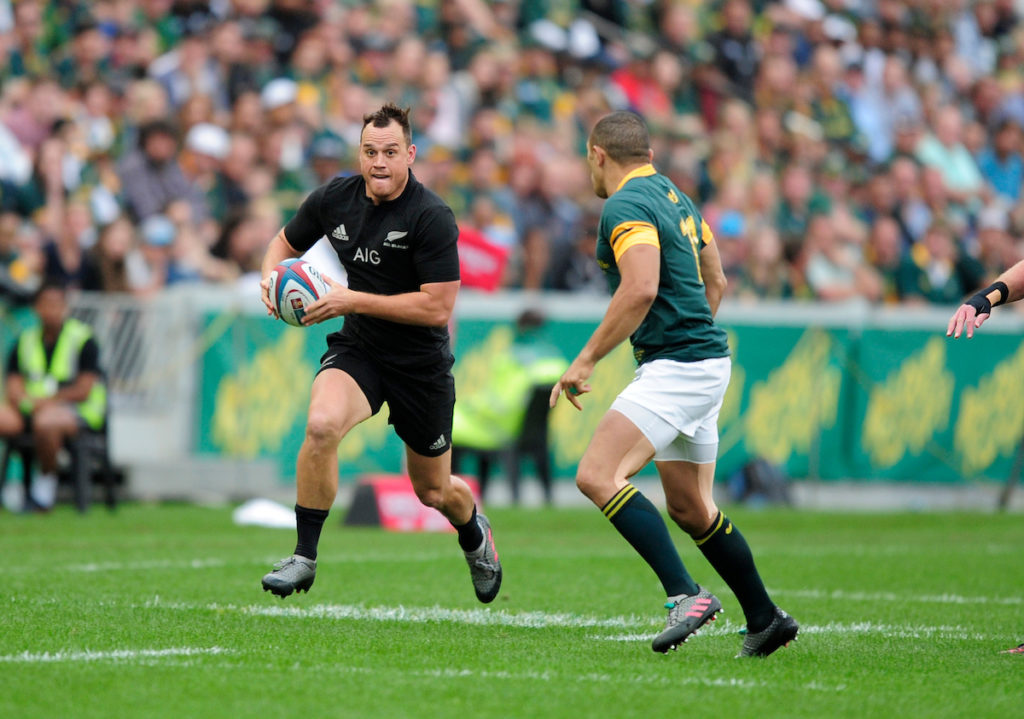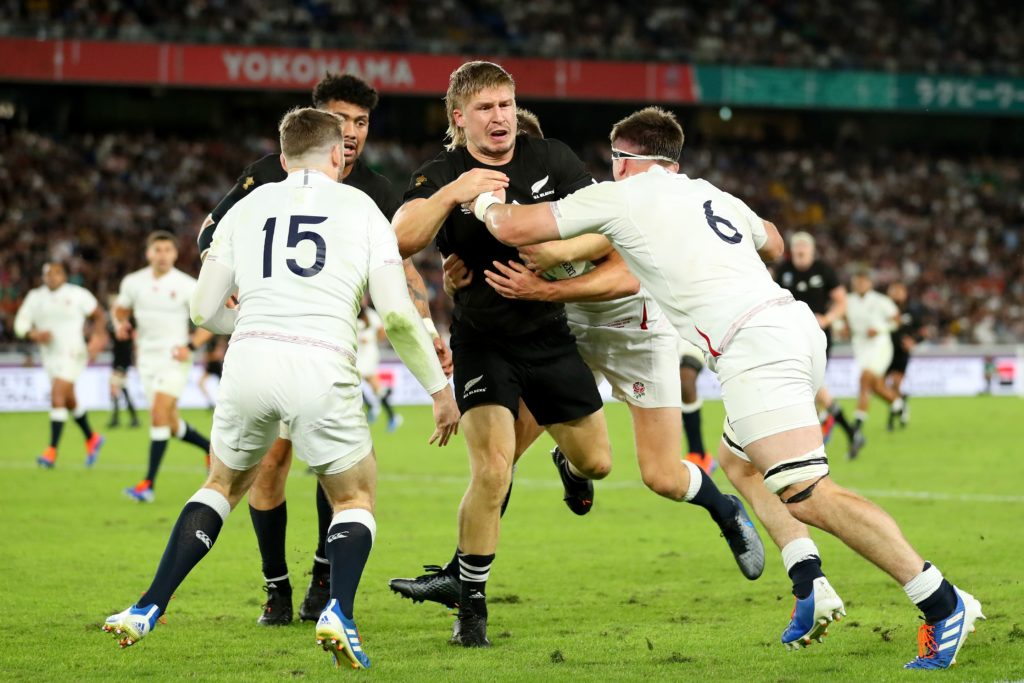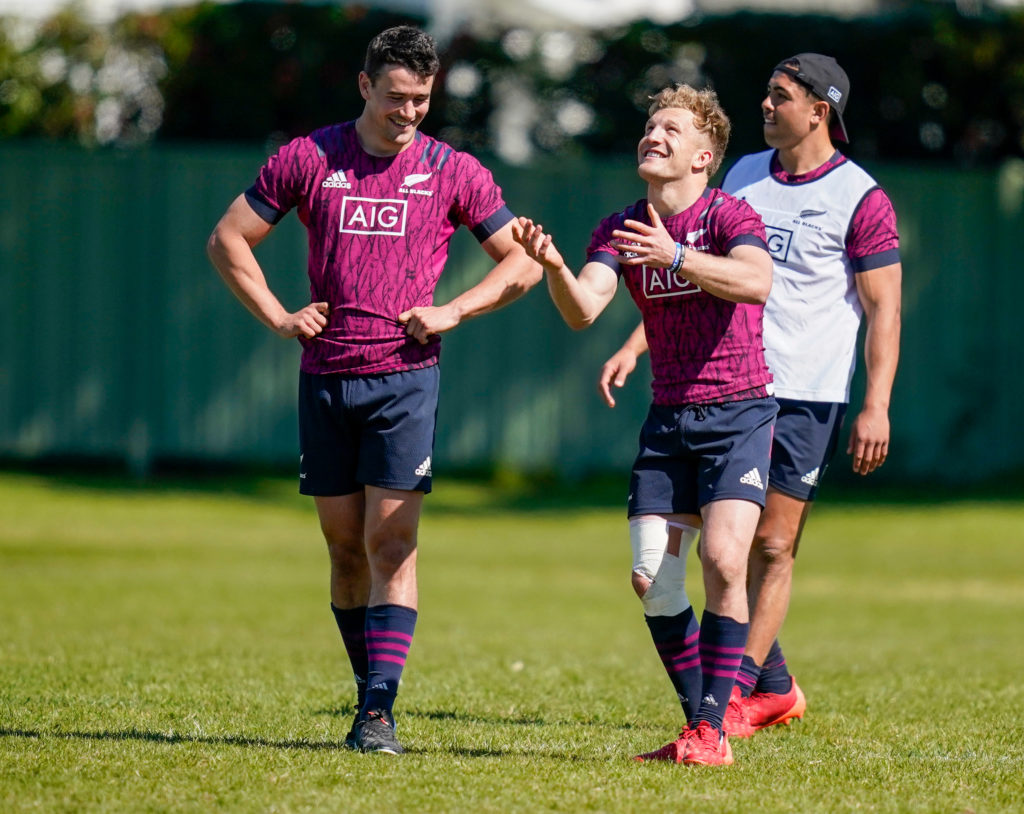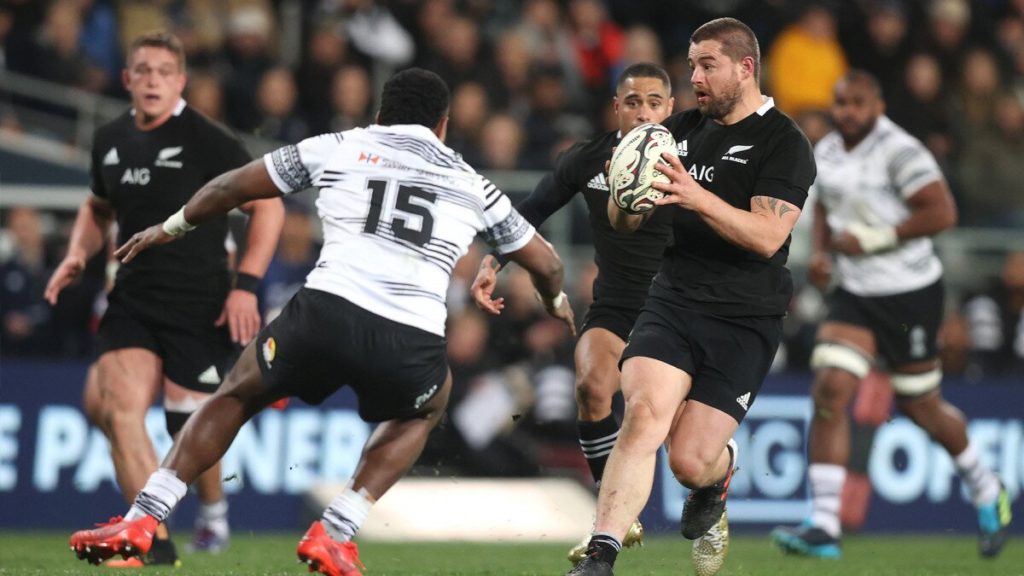Really thinking about it, we don’t yet have a great idea what sort of rugby team Ian Foster wants his All Blacks to be. We only kind of do.
Having spent eight seasons as an assistant coach, responsible for the All Blacks attack from 2012 to 2019, there are clues, certainly, to what vision Foster holds. And we can deduce from that period that he’s a smart enough cookie to be taken seriously in the art of strategic management and implementation.
In those eight seasons that Foster orchestrated the All Blacks attack, they were significantly better than every other team in the world game at scoring tries. The statistics tell quite the story.
Between 2012 and 2015, the All Blacks scored 209 tries at an average rate of 3.9 per game. The next most prolific team in that period scored just 143 tries at an average of three per game. France with 81 and Wales with 92, didn’t even crack the 100 mark.
The following cycle saw those numbers deliver an even more emphatic story. The All Blacks scored 287 tries in that cycle at an average of 5.4 a game. During the Rugby Championship in 2016, they averaged 43 points a game.

Just how staggering this was, can be seen in the figures posed by their major rivals. No other international side even came close to scoring 200 tries in the same cycle. England were the next most prolific, scoring 176, with Ireland on 171, Australia on 164 and South Africa 148.
Wales scored just 120 tries in the same period while France didn’t crack the century, falling short with just 99.
There will be those who say that despite the numbers, the real story was that the All Blacks were brilliant only up to a point and that the shift that cycle towards aggressive, rush defences flummoxed them.
That’s not strictly true, however, as the All Blacks still managed to score tries against the best defensive sides. In four tests against Ireland between 2016 and 2019 the All Blacks scored 14 tries for an average of 3.5 per game. Against South Africa over the same period they scored 39 tries for an average of 4.9 tries per test and against Wales they scored 27 tries for an average of 5.4 per test.
England, who they only managed to score two tries against in two tests, were the only defensive nut they couldn’t crack and as an attack coach, Foster had plenty to offer.
We don’t know yet the hallmarks of his vision and that’s why we still aren’t certain as to the make-up of his preferred XV. But we are getting closer to that and the next two months should deliver more definitive answers on both fronts.
But he was working mostly to head coach Steve Hansen’s vision. Foster’s job was to deliver the sort of rugby Hansen believed in. Foster had some say in that, but the style of rugby the All Blacks played between 2012 and 2019 was mostly determined by Hansen.
What we don’t quite yet know, because last season curtailed the amount of football the All Blacks played, is quite what Foster’s attacking vision looks like.
We don’t know yet the hallmarks of his vision and that’s why we still aren’t certain as to the make-up of his preferred XV. But we are getting closer to that and the next two months should deliver more definitive answers on both fronts.
What we can guess, from what we have seen, is that some elements of Hansen’s tenure will be continued, most notably a desire for the attack to be north to south rather than east to west.
Foster likes his ball carriers to be straight, shoulders square to the touchline. He’s not a fan of forwards coming round the corner off ruck ball as it makes it hard to offload doing that and he doesn’t like to see his back three run across the field to launch a counter-attack.

We also know he likes to have his midfield close to the gain-line and aligned almost parallel with one another, and his blindside wing often used to sweep around and inject himself into the line.
But more fundamentally, we still don’t really know what sort of balance he likes between pass, run and kick or how much he wants to use his forward pack as a ball-carrying weapon.
These bigger questions are what will effectively be answered throughout the Rugby Championship, with Foster providing some pre-tournament clues with his comments ahead of the second test against Fiji, about what he has picked up so far from watching the French play Australia and the British & Irish Lions tour of South Africa.
“Over in Australia it is a really competitive series isn’t it? We have seen one team play a lot of rugby and a lot of phases and if you don’t get every phase right, you get punished. There is very much a theme there isn’t there, where teams are backing their defensive ability to look for weakness in support systems and go for it.
“The South African series was always going to be tough. Again, you have got one team that is making a lot of passes and 15-20 linebreaks and another team only beats four defenders and two linebreaks and they win the game.
The likes of Scott Barrett, Akira Ioane, Ardie Savea and Luke Jacobson gives the All Blacks greater ability to carry better and more through the forwards, while the presence of Aaron Smith, Richie Mo’unga, David Havili and Damian McKenzie gives them four tactical kickers in the backline.
“So you have got a very much carry, conservative type gameplan against an expansive one and that is the balance nowadays. It is how much do you play and how much do you go conservative? I think it is a balance, playing around trying to get the right mix.”
The team picked to play Fiji in Hamilton, seen by many as the strongest indication yet of what Foster believes is his best team, is arguably designed to give the All Blacks the ability to play around with their attacking mix.
The likes of Scott Barrett, Akira Ioane, Ardie Savea and Luke Jacobson gives the All Blacks greater ability to carry better and more through the forwards, while the presence of Aaron Smith, Richie Mo’unga, David Havili and Damian McKenzie gives them four tactical kickers in the backline.
If the All Blacks want to be conservative, lumber from set piece to set piece and play for territory, they have the players to do just that.
But more likely, what the team picked to play Fiji really tells us, is that Foster wants his side to be bold enough to keep the ball, trust their skills and be prepared to take risks.

He’s not looking for his All Blacks side to be one of those teams that goes through endless phases without going really going forward or without stressing the defence. The backline he has picked suggests he wants to make lightning strikes – to get in behind defences, or round the outside of them and finish whenever they do.
He’s picked one of the smallest back threes in living memory. But they are devastatingly quick. His midfield is relatively small, too, but certainly robust. It’s also widely skilled and in possession of unorthodox skill-sets.
Havili and Lienert-Brown don’t do things by the book and neither fit the bill as gain line hitmen.
Smith and Mo’unga are tiny yet both super quick in speed of movement and thought and it is a backline without major physical presence so will have to use its collective speed, skill and intelligence to break defences.
I like what I saw and I think for the All Blacks to win, I don’t think we can rely on just being physically better than all teams. We might do that maybe against Australia, not necessarily against some of the other northern teams or South Africa.
Former All Blacks coach John Hart
Such a plan is one that excites former All Blacks coach John Hart, who says: “I don’t think we’re a side that naturally is just going to belt teams physically and I think that means we have got to have more to our game.
“I think we do have that and that’s why I was thrilled with some of the skills … particularly in the passing in the backs, in both games.
“I like what I saw and I think for the All Blacks to win, I don’t think we can rely on just being physically better than all teams. We might do that maybe against Australia, not necessarily against some of the other northern teams or South Africa.
“So I think getting the balance of our game right is our challenge, in terms of being able to apply the pressure up front and use the skills of the loose forwards and the backs. I don’t think it’s a matter of just belting teams up physically anymore.”
It’s arguably the most exciting backline the All Blacks have picked in a decade and built into Foster’s thinking is the imminent change in rules which will kick in for the Bledisloe Cup and Rugby Championship.

Not everyone is enamoured by the proposal but nevertheless, there will be critical changes made for the Championship, most notably the introduction of goal-line drop-outs, the 50-22 rule, the outlawing of multi-pods being able to pre-bind before a collision and the ability for referees to penalise the non-ball carrier for going off their feet if they are pre-bound before they enter a ruck.
“I think the latching and not going to ground, where the support player – if you latch on to the ball carrier and end up going to the ground then that is losing your feet like it is in a normal ruck situation,” says Foster.
“I think that is going to be really intriguing because it depowers that collision area a little bit and how teams manage with that is going to be interesting.
“The 50-22 will be the interesting one from a tactical side. It is encouraging teams to have more defenders in the backfield covering that which leaves to opening more space. Some of the systems we are trying to get going now are with an eye to the future and particularly that. It does expose you if they haven’t got players in the backfield.”
There’s no doubt the picture is slowly becoming clearer as to what sort of attacking football the All Blacks will play with Foster as head coach and which players will be asked to lead it.
It’s likely that he wants to play high tempo, highly skilled rugby as a default setting, but with the ability to kick, scrummage and slow things down if needs be.


Comments
Join free and tell us what you really think!
Sign up for free